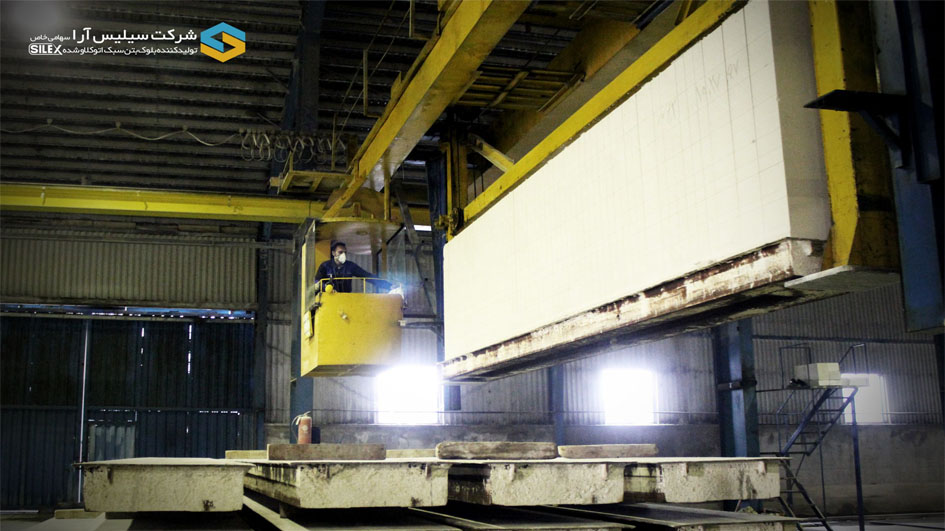After the precise cutting process on the production line, the silica blocks are prepared for entry into the autoclave stage. At this point, the blocks are carefully removed from the cutting line and systematically arranged for autoclave loading. This arrangement ensures that heat and pressure flow uniformly to all blocks inside the autoclave. The autoclaving process, which involves applying high temperature and pressure, helps increase the strength and durability of the blocks, transforming them into high-quality final products that meet industry standards.

Following their exit from the cutting line, the silica blocks are stacked on special pallets and transported toward the autoclave using rail-based conveyor systems. These rail systems are precisely engineered to move the blocks smoothly without any shaking or impact, which is essential for maintaining the integrity and uniformity of the blocks.
Before the blocks enter the autoclave, quality control engineers perform a final inspection of the blocks exiting the cutting line to ensure there are no defects or cracks on their surfaces. This inspection guarantees that only high-quality blocks proceed to the autoclaving process, ultimately resulting in products with optimal strength and durability.
After precise cutting, the silica blocks are placed on special rails and gently transferred into the autoclave for the curing process.
The blocks are cured under controlled high temperature and pressure inside the autoclave, completing their transformation into durable, high-quality construction materials.